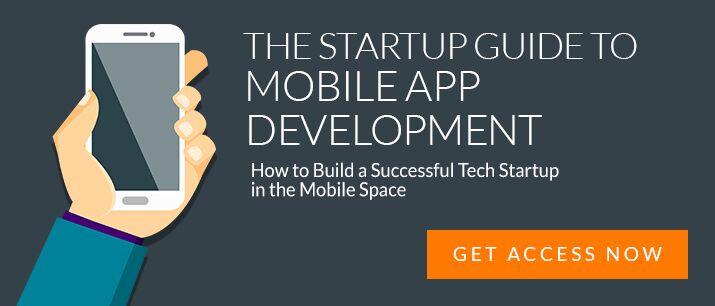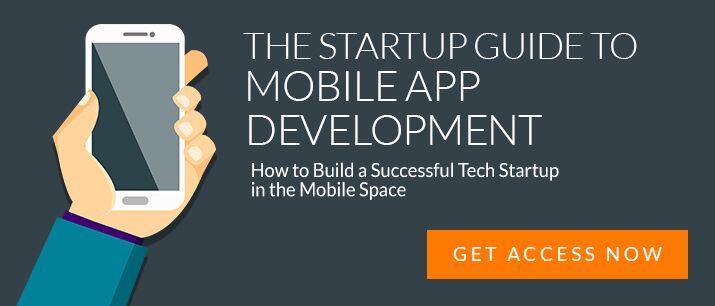The Ultimate Guide to Performing Competitive Analysis on Apps
You’re reading part 3/5 of the Buzinga crash course How To Build An App: Moving Forward With Your App Idea
Go to Part 1: How To Estimate Market Size For An App Idea
Go to Part 2: 5 Tips For Validating Your App Idea
Go to Part 4: How To Choose Your App Monetisation Model: 6 Key Questions
Go To Part 5: The 20 Minute, 1 Page Business Plan For Lean Startups
How often do you go driving with your eyes closed?
Is that a stupid question? Well, entering a market without performing a competitive analysis is about at outrageous as driving with your eyes closed.
Yet so many people do it…
If you can’t see the obstacles ahead of you then your chances of success are MASSIVELY reduced.
Competitive analysis is about risk mitigation and identifying a gap in the market so that you can
- Get a solid footing in the market; and
- Prepare for massive expansion.
Recommended: The Startup’s Guide To Estimating Market Size For An App Idea
In this guide we’re going to analyse your competitors; We want to know what they’re doing well; what they’re not doing well; and more importantly what they’re not doing at all.
Then we’ll use this information to position you as the leading authority in the marketplace.
Sound good?
What’s in this guide:
I have collected and created 5 exercises for performing an app competitive analysis. These exercises will help you identify your competitors, expose their weaknesses and strike at their jugular. <–you’re ruthless!
Here’s what you’re going to get:
- How to identify your competitors
- Business comparison
- App Marketplace analysis
- Target Audience ‘needs’ analysis
- Evaluating marketing mediums
You’re likely going into this with an app idea in mind. This exercise will help you flesh your idea out in more detail.
Upon finishing these exercises you will have clear vision of the competitive landscape. You will quickly be able to identify low-hanging fruit in your market. You will know where threats lay and most importantly you won’t be putting your success up to chance.
Knowledge allows for smart, calculated and accurate decisions.
Let’s go through each exercise step-by-step.
1) How to identify your competitors?
The first step of running a competitive analysis on apps is pinning down exactly who your competitors are.
What we want is a full understanding of who’s competing in this space, what they’re offering and what we can do different/better to penetrate the marketplace like a needle. Then expand like tree growing through a crack in the pavement.
First of all, let’s define the word ‘Competitor’.
Define competitor:
“An organisation engaged in commercial or economic competition with others.”
In other words, anyone who is providing a similar or the same service that you’re providing that is an alternative solution to using your service, is a competitor.
OR, any organisation that wants to steal your customers.
At this stage we’re not overly concerned about market-share and other trivial data. We’re only interested in knowing who our competitors are, and making a log of them.
Exercise:
What I want you to do is open a new spreadsheet and make a list of all your competitors.
If you don’t know who they are, google some keywords that are related to your application, and add the keyword ‘app’ at the end of your sentence.
E.g.
‘Keyword’ + ‘app’
Make a log of the following information under each competitor:
- Website address
- Social media profiles/pages
- iTunes app link
These links will give you quick access to most of the key information we’re going to need as we drill down into your competitors data in later exercises.
Got an app idea you’re ready to bring to life?
Don’t miss the guide that helped a startup sell for $12 million…
2) Business comparison
In this section we’re going to compare your product to your competitors. I want you to perform the following exercises for each of your competitors.
Understanding your competitors, their product and market advantages will ensure you don’t end up going head-to-head with a competitor on their strong points.
Product features
Identify every product feature that each of your competitors offer. Give it a name and a brief description.
Presence
From looking at your competitors web-presence you should be able to establish quite quickly if they are a major threat or not.
Analyse your competitors their online presence using the following tools:
- Web Presence – grab your competitors website link/URL and drop it into the search bar on the Alexa home page. This will give you a visitor traffic ranking where 1 is the best. Anything higher than 800,000 is considered a low threat. That would be about 20 visitors per day…nothing really.
- Social Presence – copy your competitors social media URL’s from their actual pages/profiles. Paste it into the spaces provided on the Wildfire monitor page and click the ‘Compare’ button. This will give you a full preview of your competitors social media presence.
Chances are that you’re starting off at zero. So anything might seem like a major threat to you, for now.
I want you to simply rank each of your competitors on a scale from 1-high threat, to 10-low threat. Use the most threatening competitor and the least threatening competitor as bench marks.
Monetisation model
What is the monetisation model that you competitor uses. There are literally hundreds of unique monetisation models available with mobile apps.
Get clear on how your competitors make money. Sometimes apps aren’t designed to make money immediately. In the case that your competitors haven’t implemented a monetisation model yet you’ll need to keep a close eye on their updates later on.
See also: 8 most popular app monetisation models.
Market position & branding
‘Market position’ is the market perception of your product. In other words, it’s how your product/service is perceived by the world. Classic example:
Apple vs Dell
Apple and Dell sell computers. Apple positions themselves as cutting edge, elegant and luxury. Dell positions themselves as sturdy, reliable and value for money.
At the end of the day they’re just computers, but Apples market positioning supports their ‘through-the-roof’ prices.
Assessing your competitors market position helps you identify gaps in the market.
Here are some potential positions in any marketplace that you could use in yours:
- Modest
- Cool/designer
- IT savvy
- Smart
- Charitable
- Expensive
- Healthy
- Organic
- Holistic/metaphysical
- Low price
- Honest
- Easy to use
- Exclusive
- Quality/reliable
- Social
- Age sensitive (older/younger)
- Athletic
- Cultural
- Etc.
Assess unique value offering
What value are you competitors offering that’s unique to one-another?
There are generally certain value offerings that are ‘the norm’, and in fact have become an expectation by customers within an industry. Don’t use these as your ‘point of difference’.
For example, in app development it’s expected that projects are ‘on time and on budget’. Or even ‘bug-free’. That’s normal.
However, something like ‘Fastest App Development In Australia’ or ‘The World’s Best App Designers’ are a unique value offerings.
Back to the question: What unique value are your competitors offering?
Define their target audience
Based on your competitors market position and unique value offering you should have a good idea of who your competitors are targeting.
In many cases people who are new to app development will assume that their target audience is anyone and everyone with a smartphone. This is simply not the case.
You only want to ‘target’ the people who are very well suited to your application, and need the value that your application provides. Targeted marketing is cost effective and hammers the message home to people who will derive the most value from your product or service.
See also: How to Define Your Target Audience.
SWOT analysis
A SWOT analysis is a breakdown of your competitors perceived strengths, weaknesses, and what opportunities that creates for you and what threats are presented.
Ask yourself the following questions:
Strengths
- What advantageous does their application have?
- What do they do well?
- What other strengths do they have?
Weaknesses
- What could they improve?
- What should they avoid?
- What are people in the market likely to see as a weaknesses?
- What other weaknesses do they have?
Opportunities
- What opportunities can you spot that they should be taking advantage of?
- What interesting trends are you aware of that they may not have noticed?
- What other opportunities can you spot?
Threats
- What obstacles do they face?
- What are they doing that could pose as a threat to your business?
- Is changing technology threatening their position?
- Could any of their weaknesses seriously threaten their business?
- What other threats can you identify?
Being clear on your competitors strengths, weaknesses, opportunities and threats opens up gaps in their armour. It also paints a clear road map for your own applications potential growth.
Using this information you don’t even need to be offering anything that hasn’t already been done. You could simply marry up value offerings from each of your competitors products and create something that’s unique in its own right.
3) App Store Analysis
How are your competitors application faring on the App Store?
In this exercise we’re going to look at your competitors App Store Data which available for free…to anyone!
Recommended: The Ultimate 2015 App Store Optimisation Cheat Sheet
Let’s drill down:
Average rating
What is the average rating user rating on the App Store for the current version and all versions?
This data tells you whether or not your competitor has a good track record with their users. A bad user rating is pretty serious. If you competitors have straight 5-stars then look at how new they are and how many versions they’ve gone through. Most apps will have some negative reviews if they’ve been around for a while, and if they’ve had a lot of downloads.
User reviews
This is a chance for you to identify opportunities for development and features. Often times users will complain about a particular feature, bugs, etc. This poses an opportunity for ‘ideas-stealing’.
Quote:
“Good artists borrow, great artists steal.”
-Steve Jobs
Update cycle
How often are your competitors updating? An established development team will have a daily, weekly, monthly, quarterly, etc. update schedule. Stay on top of their update cycle so that you can strategically release updates accordingly.
Maybe position your releases one or two days before theirs? You cheeky devil!
4) Target Audience ‘Needs’ Analysis
This is about finding low hanging fruit and achieving user validation as quickly as possible.
Your target audience have certain needs, and your service (including that of your competitors) is designed to fit those needs as tightly as possible.
Here’s where it gets complicated. Some segments of the market have slightly different needs. There fore you need to identify a viable segment of the market and target them by building a service that best suits their needs.
Recommended: How To Get Crystal Clear On Your User
Again, targeted marketing.
Ask yourself the following questions:
- Who’s the main user of this service?
- Can they be identified by age/location/income range/gender/interests, etc.?
- What is the user currently looking for? What do they need?
- What are they not getting?
- How can you offer them what they want?
Use this information to define your products/services features. This will later lead on to a unique selling proposition which wraps up your value proposition in one single sentence.
Example:
“Message all your friends, across all social platforms, from one place.”
5) Evaluating marketing mediums:
New startups generally only market their product in three ways:
- PR (press media)
- Keyword targeting (organic search)
- Social Media
- Ad-networks
So this is generally pretty easy.
PR Exposure
Many startups with cool ideas get featured in tech blogs like TechCrunch and Mashable. They’re free so it makes sense.
Startups generally flaunt their ‘features’ on the front page of their website.
If this is the case then make a record of these tech blogs so that when you launch you product you can swing your story over to them.
Recommended: How To Get Key Influencers To Rave About Your App
Keywords
Identifying your competitors keywords is easier now than ever before. With the use of tools like SensorTower you can get a lot of this sort of information for free.
Take a look at their title and description in the App Marketplace (App Store & Google Play). Any smart App Store Optimisation marketer would put the focus keyword in the title.
Social Media
Trawl their social media sites to find out about any promotions they’re running.
Recommended: 4 Apps Killing It On Social Media
Ad networks
Using tools like AdBeat you can quickly strip apart a competitors ad strategy. It’s a costed service ($99 a month).
Any startup who is advertising through paid media has most likely already hit market fit (unless they’re stupid) with a good conversion rate from download to paid user. This is a very competitive player.
Where else are you competitors marketing?
See also: App Marketing: How To Build Your Brand Online
BONUS: 6 Tools To Use To Monitor Your Competitors (all totally legal)
Google Alerts
Setting up Google Alerts means that every time a particular keyword related to your industry is mentioned you will receive an update via Gmail.
Recommended: How To Google Better And Become A Learning Machine
App Annie
Use App Annie to get reports on your competitor’s App Marketplace (App Store & Google Play) rank by region and category. Quite a nifty tool.
App Store
As mentioned above, the App Store is one of the most comprehensive ‘spying’ tools available on line.
SEMrush
Use SEMrush to gauge the strength of your competitors’ online presence and who they are receiving backlinks from (next level spying).
Maybe now you’re starting to realise that entering a competitive landscape is a good thing.
It means you can pick all the best bits and pieces from all your competitors and do it better…or differently.
Got an app idea you’re ready to bring to life? Don’t miss the guide that helped a startup app sell for $12 million…
Continue the crash course…
Go back to Part 1: How To Estimate Market Size For An App Idea
Go back to Part 2: 5 Tips For Validating Your App Idea
Go to Part 4: How To Choose Your App Monetisation Model: 6 Key Questions
Go To Part 5: The 20 Minute, 1 Page Business Plan For Lean Startups
Latest posts by Logan Merrick (see all)
- Ep 18: Collective Campus’ CEO on Intrapreneurship and Corporate Innovation - December 20, 2016
- 50 User Engagement Strategies For Planning Memorable Mobile Experiences - December 19, 2016
- Latest Data: App Monetisation Trends And Drivers 2015-2020 - November 25, 2016






Pingback: How To Choose The Right App Monetisation Model To Get Filthy Rich()